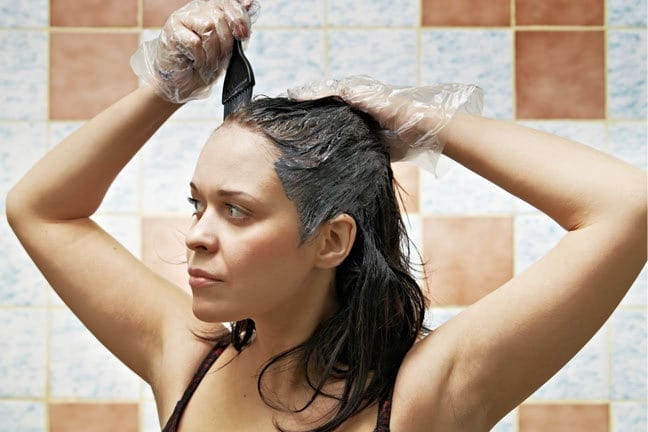 |
Everybody has their own hair dye horror story: you drank a few Pinot Grigios, bought box dye on a whim, and thought it was time to go blonde … only to wake up the next morning hungover and with half-bleached hair it took three expensive salon visits to fix. Even if your at-home dye job doesn’t involve alcohol (and it really, really shouldn’t), there’s way more to know about dyeing your hair than just what color to try. And chances are, unless you’re a hair colorist yourself, you’re a little bit in the dark about dyeing. Yes, hair color pun intended.
We talked to Drew Shetler, a star colorist at Coven salon in Seattle, about all the insane fixes she’s done over the years on clients who made a major hair mistake at home. Here’s what you need to know so you don’t end up in her salon chair with an accidental skunk ‘do:
Don’t assume that because a color looks good on a box that it’s going to look good on you.
Hair color boxes may say “brown” or “red,” but they don’t specify cool versus warm tones or other factors that come into play when choosing the right color. If you need a second opinion, bring along your friend who was a design major and have her eye the colors. And don’t assume that “medium red” from one brand will look the same as “medium red” from another brand; everybody has their own formulas and uses their own lingo. It’s sort of like how you wear three different jeans sizes at three different stores.
Don’t assume all parts of your hair are created equal.
Shetler says that most novice at-home dyers make one major mistake: pulling the color all the way through the ends. But you want the ends to match the rest of your head, right? It’s not quite that simple. “The ends are the most porous and dry part of your hair,” she explains. “They soak up color molecules like a sponge. So what often happens is that the ends end up being darker than the roots. Inky, matte black hair can be cool if you are going for a witchy look, but generally it’s unflattering on most people.” This is also a good time to invest in multiple mirrors; to prevent streaky, uneven color you’ll need to be able to see your hair from multiple angles and make sure you didn’t miss a spot.
Don’t necessarily use the whole box.
Depending on your hair texture and length, you may not need to use the entire packet of dye. Hair color companies have to guess what the average woman’s hair is like when deciding how much dye to put in the box, and that average woman may not be like you. Use your best judgment here: if your hair’s covered and there’s still half a box left, consider it an advance on the next time you do your color.
Don’t go to extremes from the get-go.
Baby steps! If you’ve never colored your own hair before, your best bet is choosing a color no more than three shades darker or lighter than your actual color. That hot pink shade may look awesome on the box (and on Pink), but remember that if you don’t bleach your hair first the pink will mix with your natural color and come out potentially funky — and not in a good way. Ease slowly into dyeing your hair with a shade similar to your own color so that you can see how it works with your skin color and tone. We hate to sound like your mother here, but you can always go more drastic next time!
Don’t dye your hair green by accident. (Don’t laugh! It happens.)
This sounds crazy, but it’s true: even though you bought black hair dye, it actually has some green in it. That goes for practically every shade on the market. “Green pigment is put in hair dye to cancel the warmth that comes from lifting/lightening hair,” says Shetler. “Hair color all comes back to the color wheel. If you are not lifting but rather just depositing, you will just see the green, because it’s not canceling any red tones. I was a victim of this one myself a lot when I would use box dye!” This can also happen if do blue dye on top of blonde dyed hair, which once happened to YouBeauty’s editor.
Last but not least: ombré is best left to the professionals.
I hope I’m not scaring the bejesus out of you when it comes to home dyeing — with practice and a good eye for color, you can master at-home color. But I’m just being honest when I warn that when it comes to something more complicated, like ombre or balayage, you’re best off leaving your locks in the hands of a professional. Even stylists sometimes need help mastering these hair trends, and they have the advantage of mirrors from every angle and extra sets of hands.
Happy hair dyeing!




































